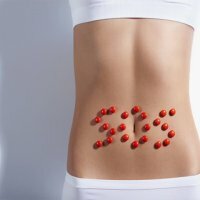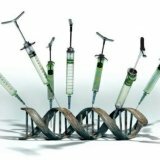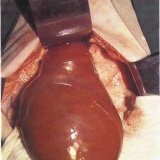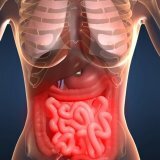Restoration of intestinal microflora

Infringement of an intestinal microflora is shortly named "a dysbacteriosis".It occurs due to imbalance between different types of intestinal microorganisms. As a result, very serious diseases can develop. According to statistics with dysbacteriosis, 98% of people came across. Therefore, the restoration of the intestinal microflora is an actual and acute task for most people.
The primary reason for this disease doctors believe is the massive transition of children to artificial breastfeeding. Over the years, imbalance in the intestines is due to malnutrition, frequent stress, periodic food poisoning, stomach upset, chronic diseases of the gastrointestinal tract and even due to unstable environmental conditions.
The active destructive effect of harmful microorganisms and their toxins can be seen in almost all human organs. Immediately, the absorption of mineral substances and essential vitamins into the blood is broken, especially elements such as iron and calcium. As a result, metabolism is disrupted and immunity decreases, which leads to aggravation of already manifested chronic diseases. The protective forces of the intestine when fighting against the ingress of dangerous toxins and pathogenic bacteria into the blood are markedly reduced. Sharply increases the load on the heart, liver and kidneys. The microflora begins to gradually break down.
How to restore a useful microflora
To get rid of the manifestations of dysbiosis, you need to enter into the diet useful foods containing valuable bacteria. This is, first of all, lactic acid products. The most useful bacteria are found in acidophilus, yogurt, ryazhenka, "live" yogurt and its special kinds.
Vegetables and fruits also contribute to the recovery of useful intestinal microflora. When ingested, they accelerate the proliferation of beneficial microorganisms already there. From vegetables, reproduction of lactic acid bacteria is enhanced: carrots, cabbage, garlic, parsley and celery. Also useful are tubers of Jerusalem artichoke and beets.
Pickled beets are the first remedy for restoring the intestinal microflora. Beets need to be cleaned, cut into small cubes, pour a warm marinade. Marinade is prepared in advance: mixed water, apple cider vinegar, garlic, salt, sugar, sweet pepper and cloves. Cover the jar with a cap cap and leave for 24 hours at room temperature. The remedy is ready.
Garlic oil is a tested "reductant" of the intestinal microflora. The garlic head is cleaned, passed through the scabbard or finely chopped. Then the garlic "gruel" is added to a glass jar and poured with 1 glass of vegetable oil( preferably sunflower oil).The bank needs to be put in the refrigerator - and after a day the oil is ready. It can be added to cereals, salads and other dishes.
Salad from celery is considered a good assistant in an upset intestine. You need to chop celery greens and its roots, add apples, half a lemon. This salad is filled with vegetable oil( can be salted).
Fresh juice from the rhizome of celery will help to restore the microflora after long reception of powerful antibiotics. Take it should be a couple of teaspoons three times daily before meals.
You can simply eat apples with fresh form 3-4 times a day. Garlic is at dinner for 1-3 slices, washing down yogurt. It is also better to reduce the consumption of sugar. This will deprive the fungi of their favorable environment for reproduction and development. You can eat dried fruits, honey, add fructose to tea. With such products, sugar is absorbed completely and goes for the benefit of the body.
Useful to know
Restoration of useful intestinal microflora with berries of cranberries reduces the growth of fungi of the genus Candida. They are the cause of thrush in women.
Favorably affect the frustrated intestines: fresh raspberries, blueberries, currants, onions, sour apples, horseradish and other fresh vegetables and fruits.
A healthy microflora is formed: St. John's wort, wormwood, plantain, cherry, currant, blueberry.



